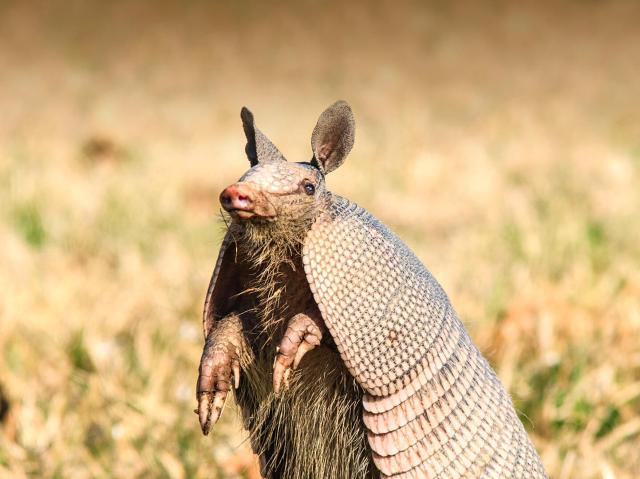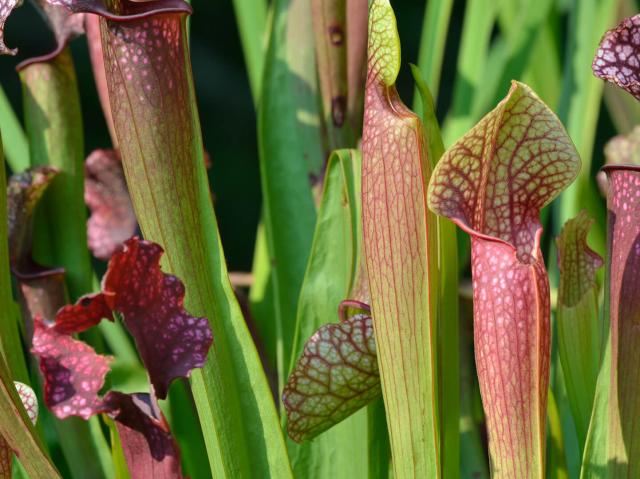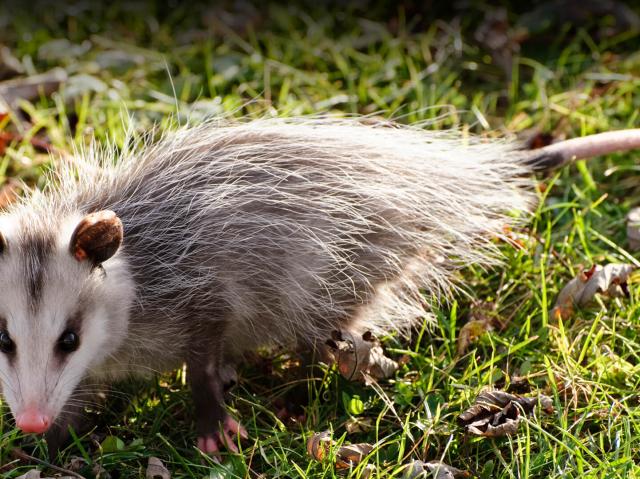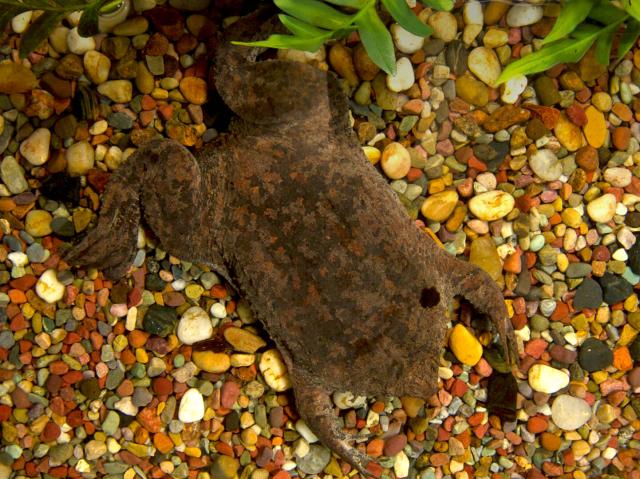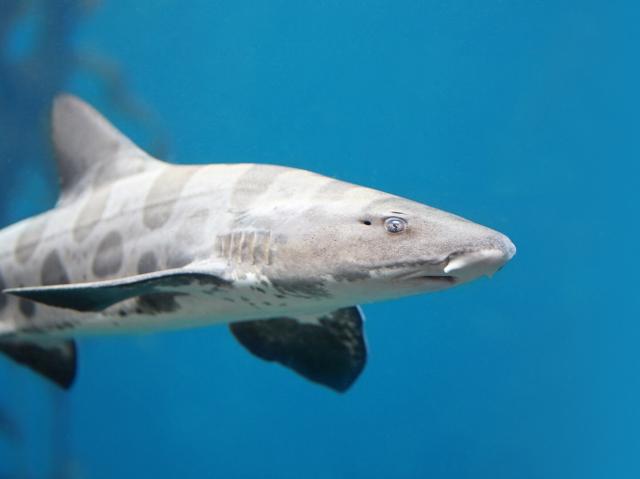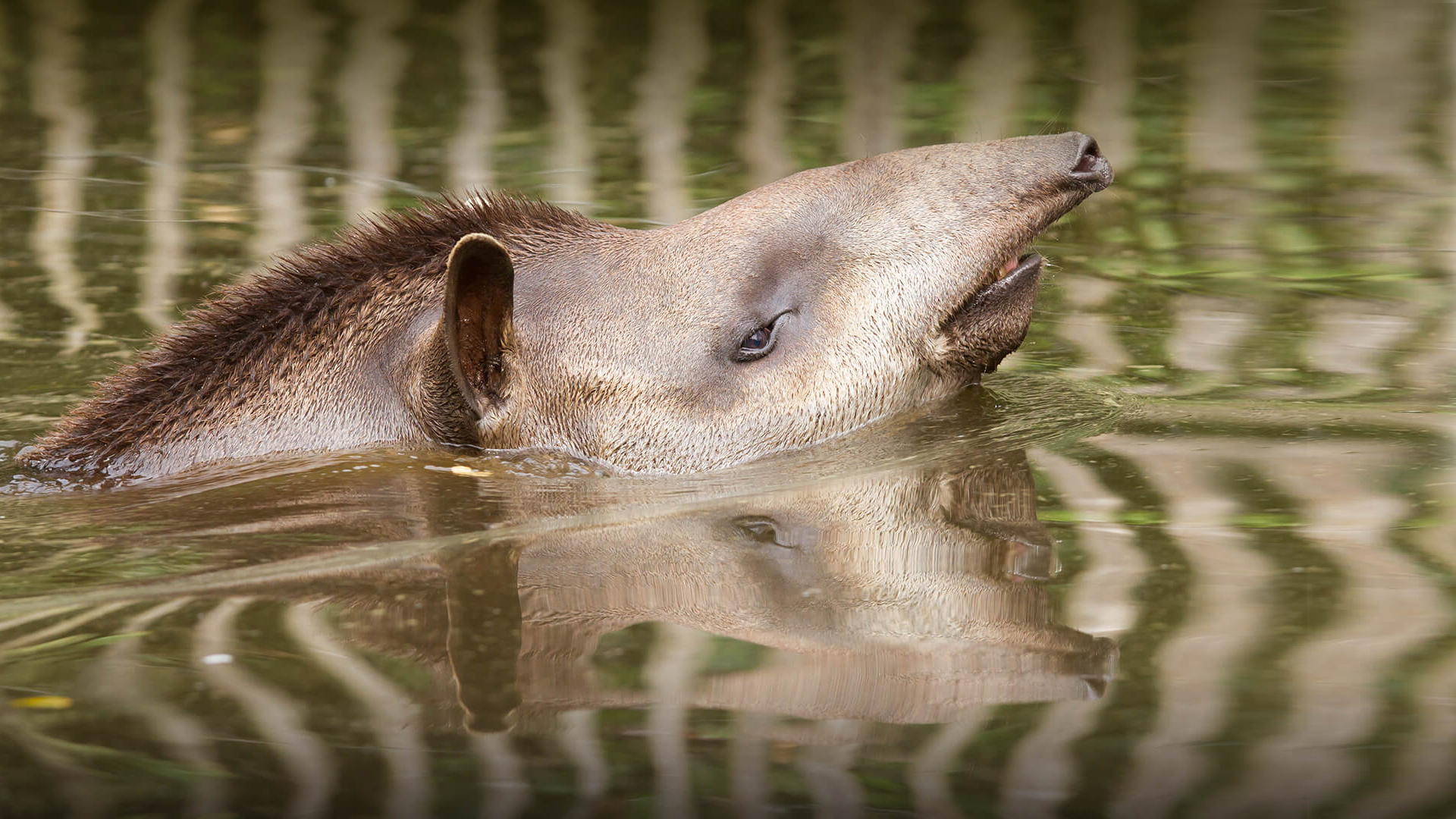
Tapir

- CLASS: Mammalia
- ORDER: Perissodactyla
- FAMILY: Tapiridae
- GENUS: Tapirus
- SPECIES: 4

ABOUT
Zoo visitors often ask, "What is it? A pig? An anteater?" No, it's a tapir, a primitive animal that has remained largely unchanged for millions of years. Tapirs are most closely related to horses and rhinos, since they have an odd number of toes (four toes on each front foot, three on each back foot). Their eyes and ears are small, and the body is teardrop shaped: tapered in the front and wider at the rear, designed to walk through thick vegetation. Male tapirs are slightly smaller than females.
The tapir's nose and upper lip combine into a flexible snout like an elephant's trunk. It can be used as a snorkel when the tapir is underwater and as an effective tool to detect odors wafting through the dense forest. This prehensile mini-trunk (by elephant standards!) is used to grab branches and strip off the leaves or to help pluck fruit and put it directly in the tapir’s mouth. It also adds an air of mystery to the tapir—at first glance, it’s hard to tell just what this creature is!
As key wildlife in shaping and maintaining the biological diversity of tropical forests, tapirs are vital components in their ecosystems. They are masters at dispersing seeds and leaving them well fertilized, providing themselves and other wildlife with an ongoing supply of food and shelter. A recent study of lowland tapirs in Peru revealed 122 different seeds in their dung!
Tapirs are important recyclers of nutrients, helping the soil and landscape thrive. They also serve as biological indicators of the health and vitality of an area: tapirs are the first to decline when there is human disturbance because of their large size, slow reproductive rate, and sensitivity to their environment.
There are four species of tapirs:
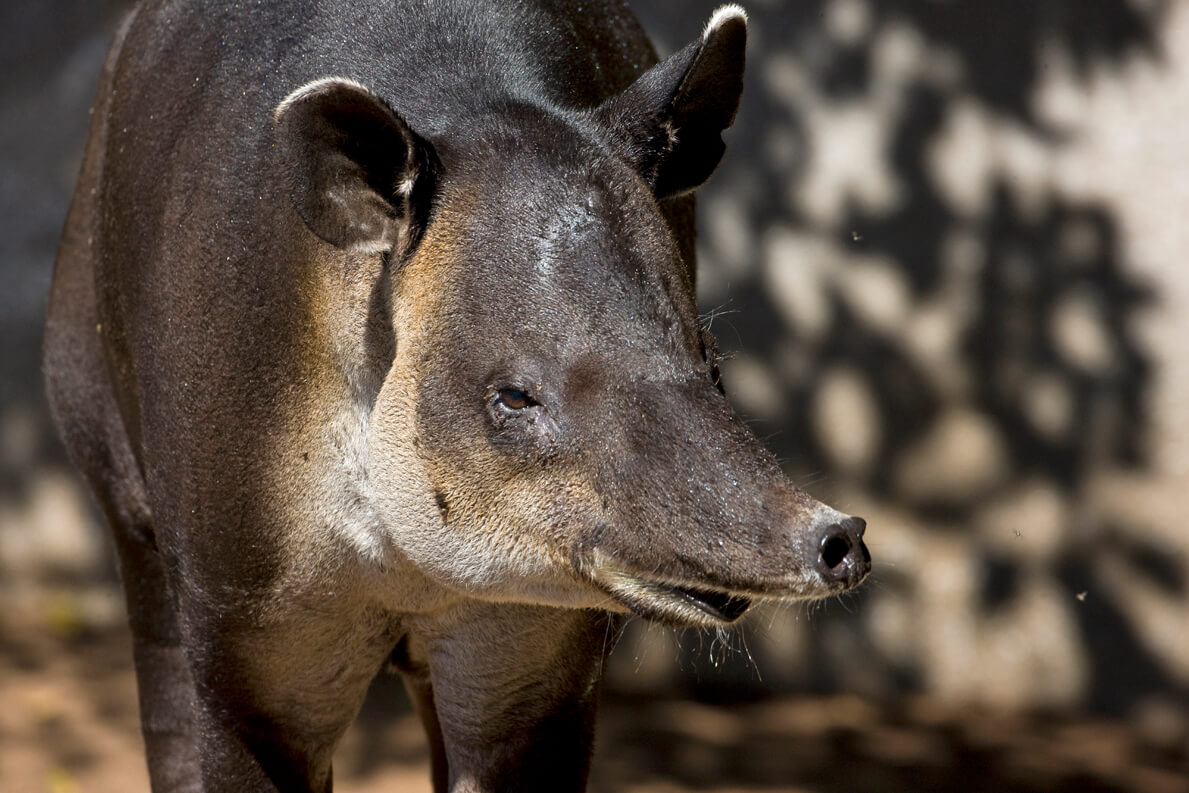
Baird's or Central American tapir Tapirus bairdii: Native to Mexico and Central America, its coat is dark red-brown to black as an adult, with a white chest and chin and white ear fringes.
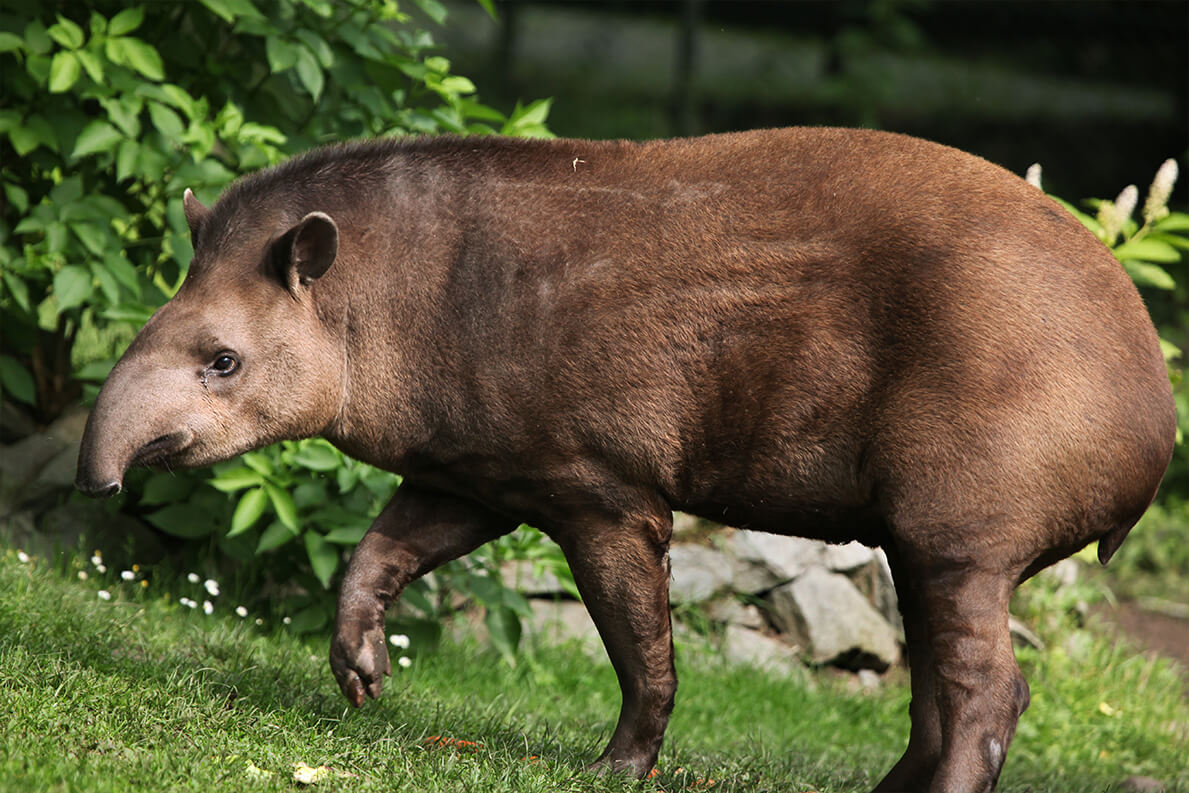
Lowland or Brazilian tapir Tapirus terrestris: Native to South America from Colombia to Paraguay and Brazil, its coat is dark on the back and lighter on the underside. It prefers living where it's warm, rainy, and humid. Crocodilians as well as jaguars are its natural predators.
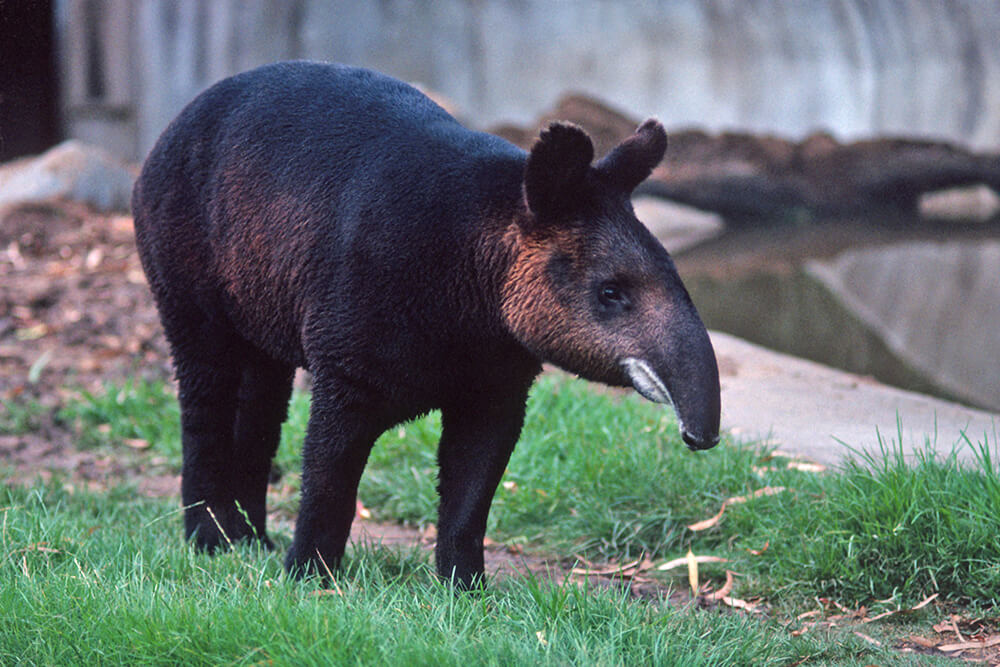
Mountain or woolly Tapirus pinchaque: Living in the Andes Mountains of northern South America, it has a longer, thick coat and undercoat to keep warm in its cold mountain home. It is one of the most endangered mammals in the world.
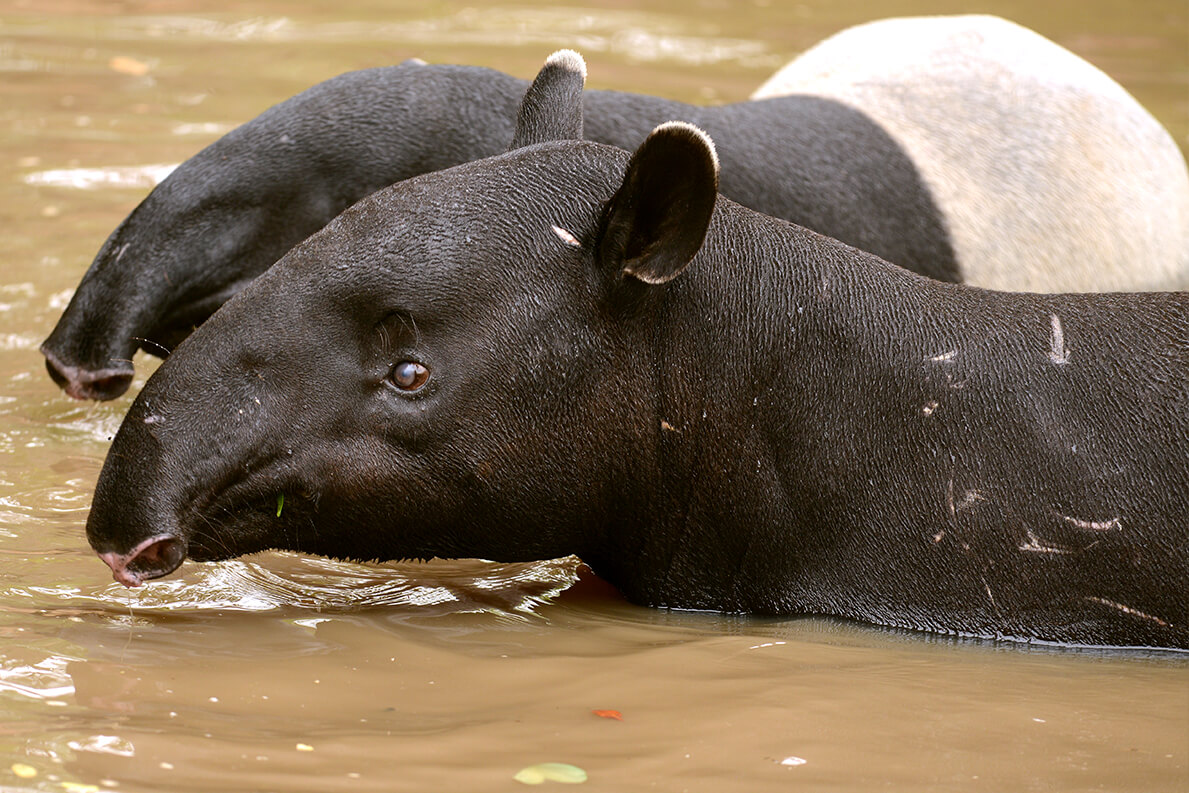
Malayan tapir Tapirus indicus: The only tapir from Asia, it is found in Thailand, Burma, Malaysia, and Indonesia. It has a distinctive coat pattern: black in the front and white in the back. This acts as camouflage by breaking up the body outline in the shade of the forest. Tigers are its main natural predators.
HABITAT AND DIET
Tapirs live in wetlands, forests, savanna, and rainforests, and they have a range that includes Mexico, Central America, South America, and Southeast Asia's Malaya and Sumatra. Tapirs prefer wooded or grassy areas with places to shelter during the day and a lake, river, or pond for taking a nighttime dip. Their toes are splayed to help create traction in the slippery mud on shorelines and hillsides. Barrel-shaped, with short, bristly hair, tapirs are surprisingly nimble and are excellent at scrambling up steep riverbanks. They can also run and swim. It is thought they walk along river bottoms, much like hippos do. When frightened, tapirs can take to the water and breathe with their snout poked above the surface like a snorkel. Large cats and crocodiles are natural tapir predators. However, adult tapirs can deter predators with their tough hide, and by snapping and biting.
Tapirs like to spend a lot of time in the water, eating aquatic plants, cooling off, or washing away skin parasites. They can stay underwater for several minutes. Even youngsters are able to swim when just a few days old. Primarily active at dawn and dusk when it’s cooler, many tapirs are active throughout the night, foraging for grasses, plants, and fruits.
A tapir is both a browser and a grazer! Using its incredible nose like a finger, the tapir can pluck leaves from tree branches or root around in the soft underbrush for fallen fruit to dine on. The tapir can use its flexible nose to explore a circle of ground 1 foot (30 centimeters) in diameter without having to move its head!

Tapirs eat a variety of different plants. This diet gives them an important role in the ecology of their forest home: seeds passing through their digestive tract help reseed for a new generation of plants. Tapirs are nocturnal, so that impressive nose is useful for finding food in the dark.
At the San Diego Zoo, the tapirs eat a variety of vegetables and browse. Bananas and apples are offered for enrichment.
FAMILY LIFE
Tapirs can communicate with each other in a number of ways. A high-pitched whistle is one of the most common tapir vocalizations: it sounds like car brakes screeching to a halt! A snort with foot stamping usually means the tapir is preparing to defend itself. Urine marking is another important nonverbal signal, and tapirs mark paths through the forest in this way, sniffing along their route and identifying other tapirs in the area to avoid a violent confrontation.
After a 13-month gestation period, a single tapir baby (twins are rare), called a calf, is born while the mother stands. The calf’s eyes are open, and it can stand one or two hours after birth.
Even though there are differences in habitat and geography, all tapir calves look like brown- and beige-striped watermelons on legs. This color pattern is great camouflage for the youngsters in the dappled sunlight of the forest, especially when the calf lies down on the ground while Mom forages. The calf begins to lose these markings after a few months, and when the youngster is about six months old, it looks like a miniature adult.
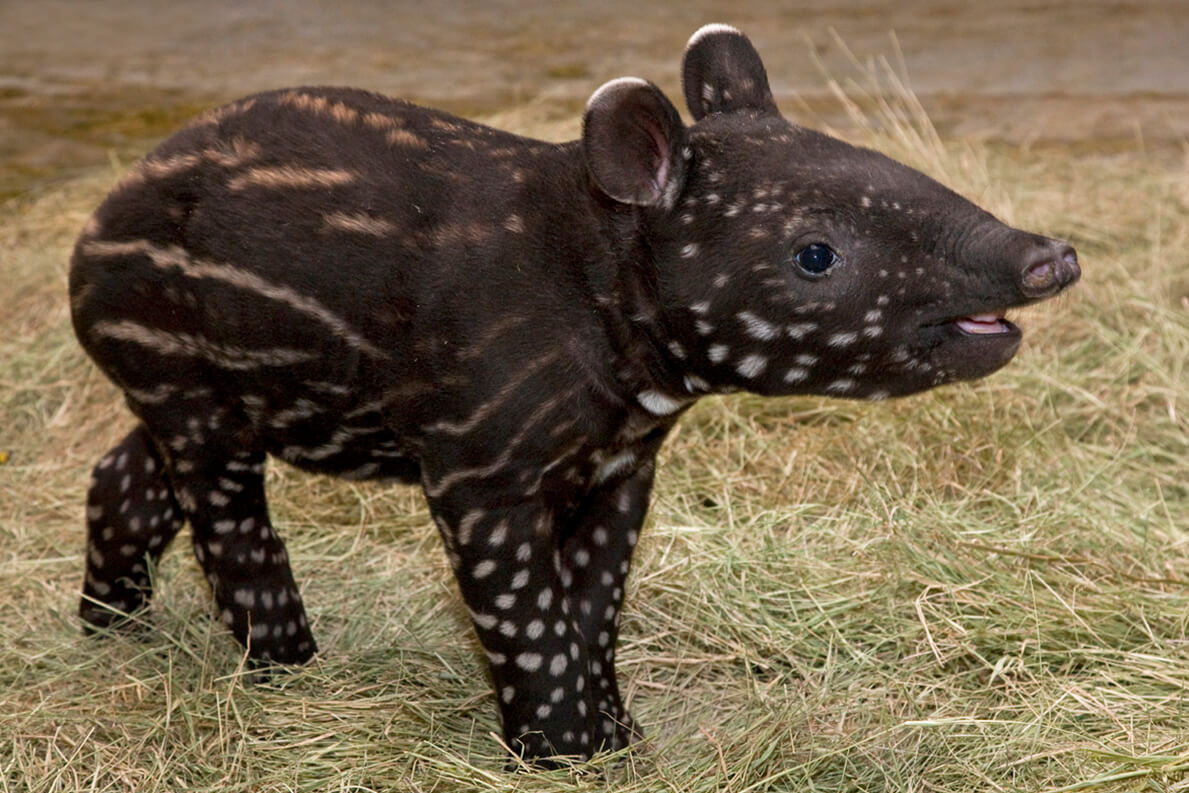
Tapir calves can swim at a very young age. Young tapirs nurse as long as the mother provides milk or until her next calf is born. For many years it was believed that tapirs lived solitary lives, except for mothers raising young or a male and female that come together during breeding season. Recently, scientists have discovered that tapirs often graze in pairs or small groups, traveling over larger ranges than previously thought.
Calves reach full size in about 18 months but are considered mature at 2 to 4 years.
CONSERVATION
Humans hunt tapirs for their meat and hide. Baird’s or Central American tapirs are also hunted for sport in Costa Rica. And as humans clear the tapirs' habitats for farming, cattle grazing, palm oil and rubber plantations, or the growing of poppies for the opium trade, the tapirs' food supply decreases. Tapirs are best suited for life in primary or old-growth forests with plenty of permanent water sources, which humans tend to “repurpose” for farms, roads, and development.
Efforts are underway in Central and South America to protect tapir habitat and use tapirs as flagship wildlife to encourage tourism (like Australia does with its koalas and China does with its pandas). This can provide jobs other than farming and logging for many people and inspire individuals to help in the protection of the intriguing tapir.
By supporting San Diego Zoo Wildlife Alliance, you are our ally in saving and protecting wildlife worldwide.
Sounds
LIFE SPAN
19.5 years median life expectancy
YOUNG
Gestation: 13 to 14 months
Number of young at birth: 1 (twins are rare)
Weight at birth: 15 to 22 pounds (7 to 10 kilograms)
Age of maturity: 2 to 4 years
SIZE
Height: 2.5 feet to 3.5 feet (.8 to 1 meter) at shoulder, depending on species
Length: Largest - Malayan tapir, up to 8 feet (2.4 meters); smallest - kabomani tapir, up to 4.2 feet (1.3 meters)
Tail length: 2 to 5 inches (5 to 13 centimeters)
Weight: 242 to 700 pounds (110 to 320 kilograms), depending on species
FUN FACTS
Tapirs are known to eat up to 75 pounds (34 kilograms) of food per day.
The most primitive large mammals in the world, tapirs have been around for 20 million years and have changed very little.
A tapir can move its prehensile snout in all directions.



